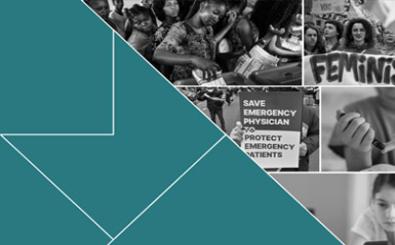I spent a day-and-a-half at the Hispanicize conference in Miami earlier this week. The event, organized by entrepreneur Manny Ruiz, aims to interest major corporations in the burgeoning U.S. Hispanic market. The 55 million Hispanics now have an average household income of $42,000, up substantially in the past decade. They are brand-loyal, increasingly well-educated, and deeply family-oriented.
In my opening address, I unveiled the results of a special surveys of trust levels of U.S. Hispanics that we fielded in October, November post-election and again in December. Going into the contest, U.S. Hispanics actually had a higher level of trust in society’s institutions (media, business, government and NGOs) than the general population. This ebbed somewhat by November and had imploded by December, down over 20 points. Trust in media among U.S. Hispanics is now at 30 percent, with business, government and NGOs only slightly higher. From a hopeful and confident group, now we have a demographic looking for leadership and a chance to believe again.
There is much business can do in this regard. Sixty-seven percent of U.S. Hispanics said that they are worried about losing their jobs because of lack of training. Sixty-one percent of the group said that they are concerned about losing jobs that move to cheaper markets. And 59 percent said they believe the pace of change in business is moving too quickly.
The companies represented at the conference seem determined to make the Hispanic community an important part of their business strategy. Here are some of the comments from speakers:
- Hispanics will help to rebuild the middle class in America.
- American football is the fastest growing sport in popularity, especially on mobile devices, though soccer is still No. 1.
- Certain brands will focus on the upwardly mobile Hispanic as Buick has done with African-Americans.
- Location matters in building relationships. Car dealerships, bank branches and other physical locations are key.
- There is a lack of confidence in the media as truly representing the experience of the U.S. Hispanic. There is a flowering of new Hispanic media options, including verticals in cooking and fashion.
- There is a very lively debate on whether the Hispanic market constitutes 26 different nationalities or a single group.
- There is a further question for marketers on whether to consider Hispanics a part of the local general population or a special segment to be addressed through their own media and events.
Rev. Jesse Jackson spoke yesterday at the conference. He made the case for a “black-brown coalition” in politics that would account for 30 percent of the population, overrepresented in big states with the highest electoral vote totals. He suggested that Hispanics come together, transcending national origin. “We are each other’s future,” he said. He wants to have young Hispanics learn English and young blacks learn Spanish.
I have awakened to the opportunity in this market for Edelman and for the PR industry in general. We should persuade our clients to give us the lead among agency partners (ad, digital etc.) because we uniquely can efficiently reach the media diaspora and stimulate the conversations in social channels. A perfect example of this type of thinking was presented by Niharika Shah, Prudential’s head of brand marketing and advertising, in the campaign BringYourChallenges.com, in which a group of children had to decide whether to eat the marshmallow in front of them or wait 15 minutes and be presented with a second marshmallow as a prize. It was a simple experiment with an important goal: save 1 percent more of your income each year and retire safely. This is our moment to implement communications marketing programs that reach brand goals and set corporate reputation simultaneously.
Richard Edelman is president and CEO.



